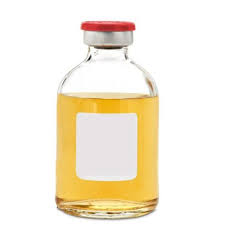Uses in Medical Devices and Implants
Medical elastomers are versatile polymeric materials that play a crucial role in many medical devices and implants due to their flexible and resilient properties. Made from polymers like silicone and thermoplastic polyurethane, elastomers are used extensively as seals, tubing, cushions, and membranes across diverse medical applications. Silicone is commonly employed as a seal or gasket material in devices such as blood oxygenators and dialysis machines due to its biological inertness and flexibility over a wide temperature range. In minimally invasive procedures, silicone and thermoplastic polyurethane tubing are favored for their kink resistance and pressure-holding abilities.
Implantable Devices and Prosthetics
Many long-term or permanent implantable devices incorporate medical-grade elastomers. Pacemaker cases, defibrillator and neurostimulator housings utilize silicones for their fatigue resistance, elasticity, and histocompatibility. Silicone-coated breast implants provide a soft interface with tissue while maintaining shape. Artificial joints employ crosslinked polyethylene or thermoplastic polyurethane bearings, permitting smooth articulation under physical stresses. Silicone, polyurethane or hydrogel-based materials are widely used in prosthetic devices to replicate natural soft tissue properties, enhancing mobility and quality of life for amputees. Their flexible and durable nature eases stresses on delicate tissues.
Ophthalmic Applications
Soft, biocompatible elastomers play a significant role in ophthalmic devices and prosthetics. Silicone-based contact lenses have mostly supplanted rigid gas permeable materials due to their comfort and tolerance by the sensitive eye surface. Intraocular lenses inserted during cataract surgeries capitalize on the optical clarity and mechanical strength of specialized foldable silicones and acrylic materials. Eyelid prostheses employ silicones or thermoplastic elastomers molded to reproduce fine anatomical details and facial expressions naturalistically. Silicone-based orbital implants provide protection and volume restoration following the removal of diseased or cancerous eye tissues.
Seals, Gaskets and Tubing
When precision sealing or flexible tubing is required, medical device manufacturers often select elastomeric materials. Silicone and thermoplastic polyurethane provide leak-proof sealing for equipment such as respirators, nebulizers, infusion and aspiration pumps. Their chemical inertness and broad biocompatibility make them ideal for applications handling bodily fluids, pharmaceuticals and implantable devices. Ultrapure elastomer-based tubing, stopcocks and connectors deliver fluids and gasses safely to patients in critical care situations. Elastomers can be molded, extruded or calendared into intricate profiles and bonded or connected using solvent,heat or radio frequency welding methods.
Tissue Scaffolds and Coatings
Scientists are investigating elastomer-based biomaterials for regenerative therapies as tissue scaffolds or coatings. Synthetic or natural rubbers, polyurethanes and silicones hold promise for engineering tissue replacements due to their flexibility, toughness and biostability. Freeze-dried scaffolds of elastomeric proteins like resilin or elastin may template cell growth into functional tissues. Crosslinked hyaluronic acid hydrogels containing elastin-like sequences display mechanical properties resembling soft connective matrices. Coatings of biodegradable elastomers on orthopedic or dental implants aim to stimulate tissue regeneration by mimicking natural elastic matrices. Overall, elastomers’ biomimetic properties position them as future platforms for advanced therapies addressing unmet medical needs.
Regulatory Guidelines and Biocompatibility Testing
Medical Elastomers must satisfy stringent standards of the U.S. FDA and other agencies globally to ensure safety. Materials intended for implantation undergo thorough biocompatibility evaluations as per ISO 10993 protocols. Cytotoxicity, sensitization, irritation potential, systemic toxicity, genotoxicity and implantation assessments using relevant cell and animal models determine if an elastomer elicits adverse biological responses. Devices incorporating elastomers also require mechanical testing, shelf-life evaluations and packaging/sterilization validation. Manufacturers must demonstrate adequate material characterization, quality assurance and control through all stages from synthesis to finished product. Regulatory clearance confirms that medical-grade elastomers meet high benchmarks for biocompatibility, efficacy and reliability in sustaining human life and health.
Medical elastomers represent an important biomaterial platform that is constantly being refined and applied in novel ways. Their unique properties of flexibility, resilience and fatigue resistance enable product innovations across wide-ranging medical fields. These multifunctional materials serve irreplaceable roles in devices, implants and regenerative therapies thanks to strong biocompatibility profiles established through extensive research and testing. With continuous material and application advancements, elastomers promise to further expand healthcare frontiers and improve quality of life for patients worldwide.



